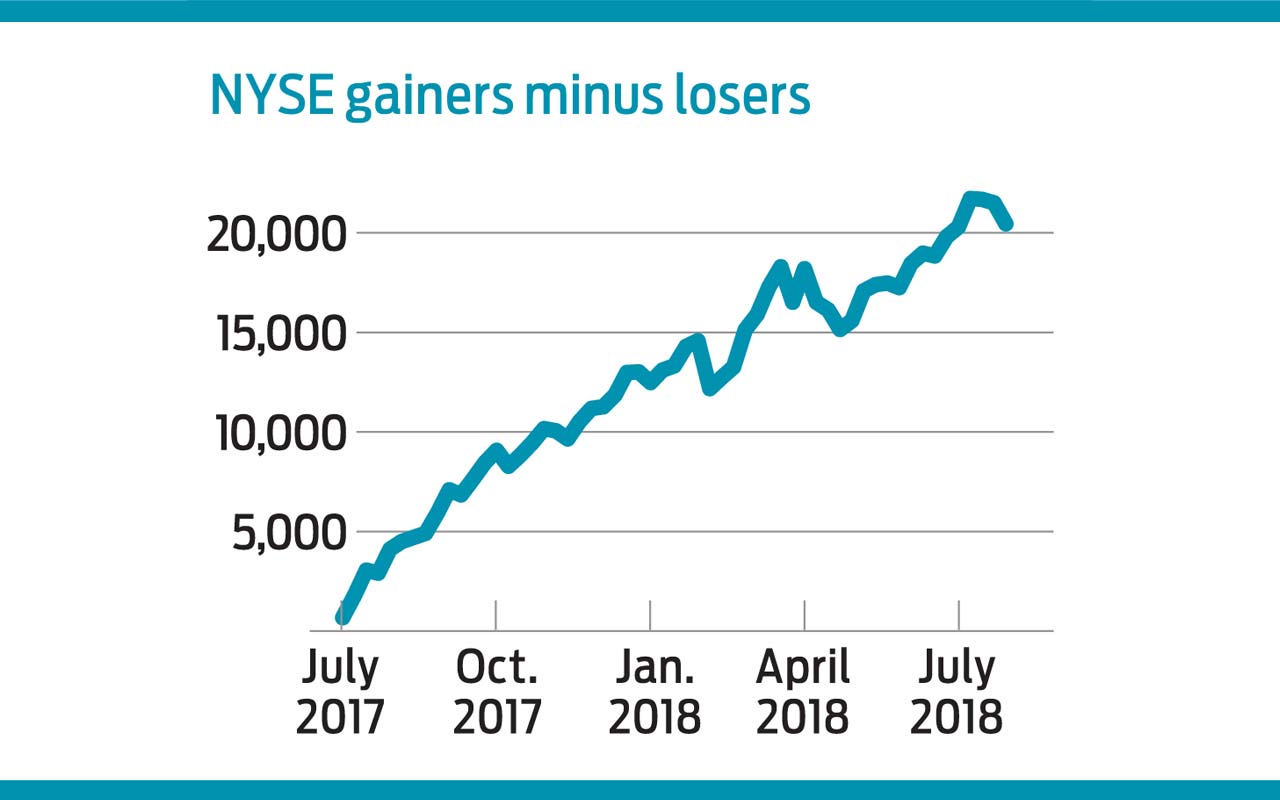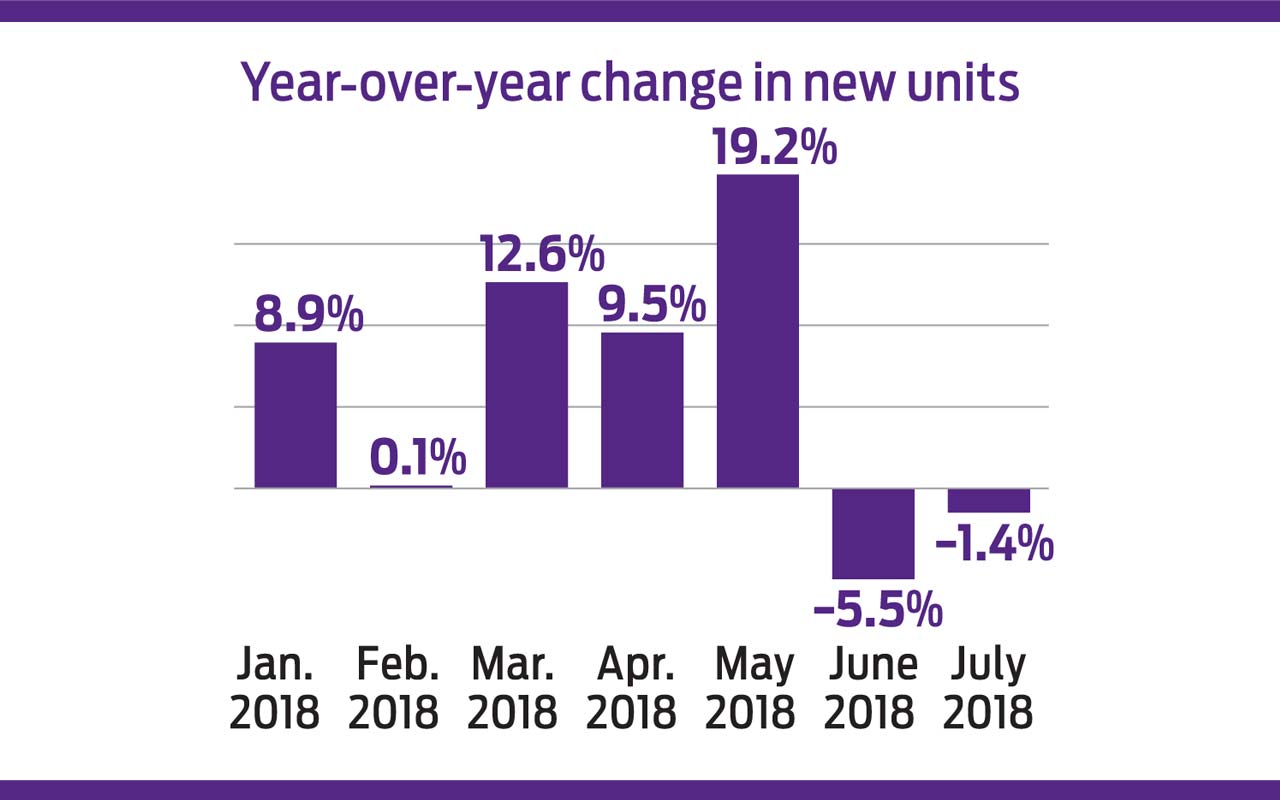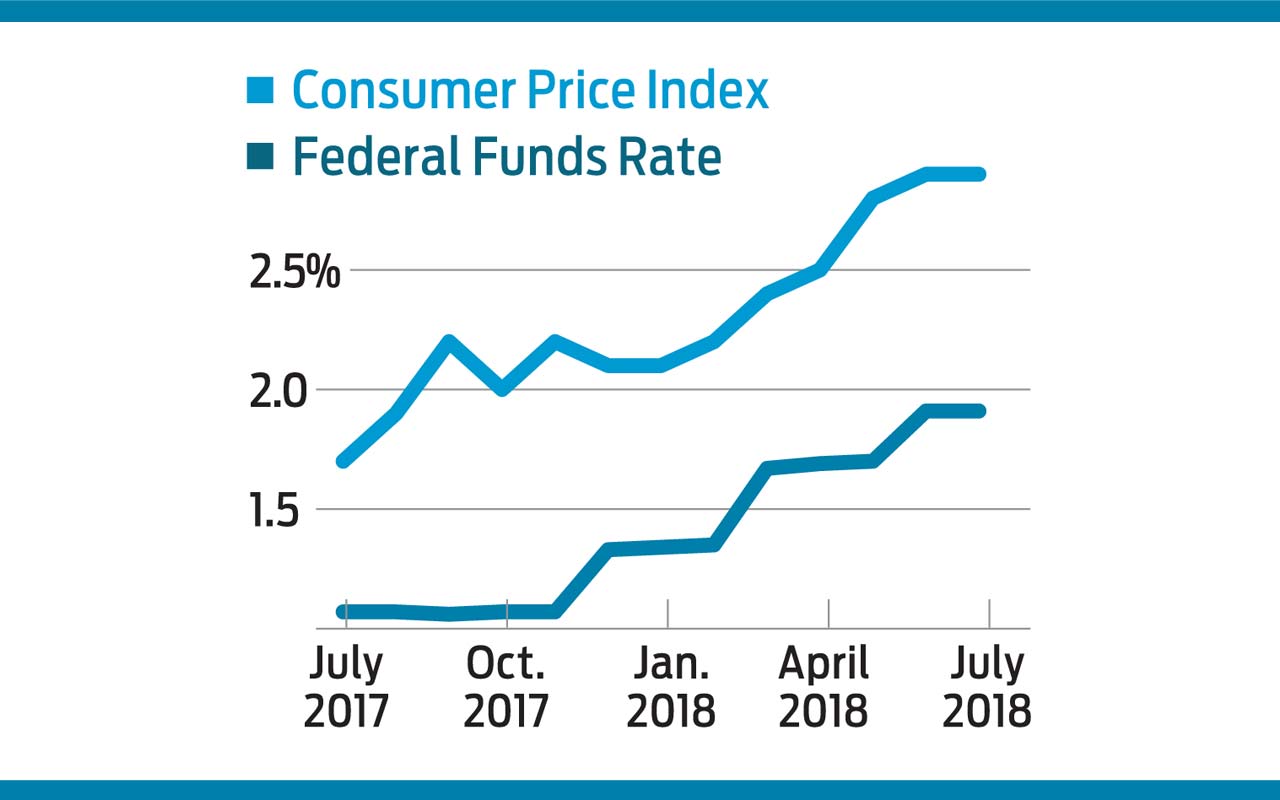5 Signs to Watch for a Stock Market Peak
It’s no secret that the current bull market and economic expansion are getting long in the tooth.


It’s no secret that the current bull market and economic expansion are getting long in the tooth. Eventually, the market will turn bearish, and history tells us that we’re likely to see a recesssion six to nine months after the bull market’s peak.
These five indicators can help you spot market tops and recessions on the horizon. Think of them as alarm bells. None is ringing loudly at the moment, but if several go off in unison, consider paring back risk in your portfolio.

Consumer Confidence
- The indicator: The Conference Board’s Consumer Confidence Index, released monthly, tracks consumers’ attitudes about business and economic conditions.
- Why watch it: Consumer spending drives nearly 70% of U.S. economic activity. “A sharp drop in confidence implies that a recession is imminent,” says Ed Clissold, chief strategist at investment research firm Ned Davis Research. On average, recessions have occurred when the index dips to a level of 63 or below, he says.
- What it says now: At 133.4, the Conference Board index is far from recession territory, says Clissold.

Market Breadth
- The indicator: The advance-decline line represents the cumulative number of NYSE stocks with advancing share prices minus those that are declining, plotted over time.
- Why watch it: The A-D line tells you how many stocks are participating in a trend. If the generals are charging while the troops are in retreat, a bear market may be on the horizon, says James Stack, publisher of InvesTech Research.
- What it says now: Although tech titans make headlines, the market’s gains remain broad-based, says Clissold. The A-D line has stayed positive this year as U.S. indexes have climbed.

Market Leadership
- The indicator: The number of stocks hitting new 52-week highs or lows on the New York Stock Exchange.
- Why watch it: The number of stocks hitting new highs or lows can signal whether bulls or bears are driving market sentiment—whether the overall market is trending up or down. In a healthy market, fewer than 50 stocks per day on the NYSE sink to new lows, says Stack. One hundred in a day could be a temporary blip. But if you see 100 per day over several weeks, it’s a sign that bearish leadership is building.
- What it says now: Aside from a spike in February, new lows have hovered between 20 and 40 in 2018. But note that new highs typically peak one year, on average, prior to market tops. The peak for new highs in the current market was in December 2016.
QUIZ: Test Your Bear Market Knowledge

Housing Starts
- The indicator: The monthly report from the U.S. Census Bureau that tallies housing starts—the number of new homes breaking ground—compared with the same month a year ago.
- Why watch it: Housing starts indicate economic strength. “Who is going to buy a house if they’re not certain they’ll keep their job?” says Sam Stovall, chief strategist at investment research firm CFRA. Within three months of every recession since 1960, housing starts have logged a double-digit decline compared with the same month in the previous year. Average prerecession drop: 25%.
- What it says now: June figures show a 1.4% dip year-over-year, on top of a 5.5% decline a month earlier.

The Fed & Inflation
- The indicators: The Consumer Price Index, a measure of inflation, and the federal funds rate—the interest rate, set by the Federal Reserve, at which banks lend each other money overnight.
- Why watch them: Historically, bear markets have begun when the fed funds rate far exceeds inflation, says Stovall. Since 1959, the market has entered bear territory when the fed funds rate exceeds inflation by 2.7 percentage points, on average.
- What they say now: At a current annual rate of 2.7%, inflation exceeds the fed funds rate by less than a percentage point. But Stovall expects inflation to fall below the fed funds rate by the third quarter of 2019, as the Fed continues to hike rates.
Profit and prosper with the best of Kiplinger's advice on investing, taxes, retirement, personal finance and much more. Delivered daily. Enter your email in the box and click Sign Me Up.

Ryan joined Kiplinger in the fall of 2013. He wrote and fact-checked stories that appeared in Kiplinger's Personal Finance magazine and on Kiplinger.com. He previously interned for the CBS Evening News investigative team and worked as a copy editor and features columnist at the GW Hatchet. He holds a BA in English and creative writing from George Washington University.
-
 The Santa Claus Rally Officially Begins: Stock Market Today
The Santa Claus Rally Officially Begins: Stock Market TodayThe Santa Claus Rally is officially on as of Wednesday's closing bell, and initial returns are positive.
-
 How to Leave Different Amounts to Adult Children Without Causing a Rift
How to Leave Different Amounts to Adult Children Without Causing a RiftHere’s how to leave different amounts to adult children without causing a family rift.
-
 My Retirement Learning Curve, 1 Year In
My Retirement Learning Curve, 1 Year InA retiree checks in with what they wish they knew early on and what they've changed about their plan one year in.
-
 What to Expect from the Global Economy in 2026
What to Expect from the Global Economy in 2026The Kiplinger Letter Economic growth across the globe will be highly uneven, with some major economies accelerating while others hit the brakes.
-
 Shoppers Hit the Brakes on EV Purchases After Tax Credits Expire
Shoppers Hit the Brakes on EV Purchases After Tax Credits ExpireThe Letter Electric cars are here to stay, but they'll have to compete harder to get shoppers interested without the federal tax credit.
-
 The Economy on a Knife's Edge
The Economy on a Knife's EdgeThe Letter GDP is growing, but employers have all but stopped hiring as they watch how the trade war plays out.
-
 Japan Enters a New Era of Risk and Reform
Japan Enters a New Era of Risk and ReformThe Kiplinger Letter Japan has entered a pivotal moment in its economic history, undertaking ambitious policy and structural reforms to escape from decades of stagnation.
-
 After Years of Stagnant Growth, Hope Emerges for EU Economy
After Years of Stagnant Growth, Hope Emerges for EU EconomyThe Kiplinger Letter Can a German fiscal push outweigh French political peril?
-
 Trump's Economic Intervention
Trump's Economic InterventionThe Kiplinger Letter What to Make of Washington's Increasingly Hands-On Approach to Big Business
-
 AI Start-ups Are Rolling in Cash
AI Start-ups Are Rolling in CashThe Kiplinger Letter Investors are plowing record sums of money into artificial intelligence start-ups. Even as sales grow swiftly, losses are piling up for AI firms.
-
 What is AI Worth to the Economy?
What is AI Worth to the Economy?The Letter Spending on AI is already boosting GDP, but will the massive outlays being poured into the technology deliver faster economic growth in the long run?
